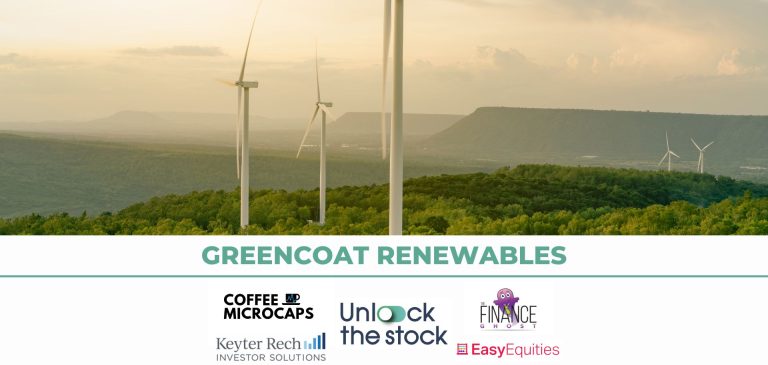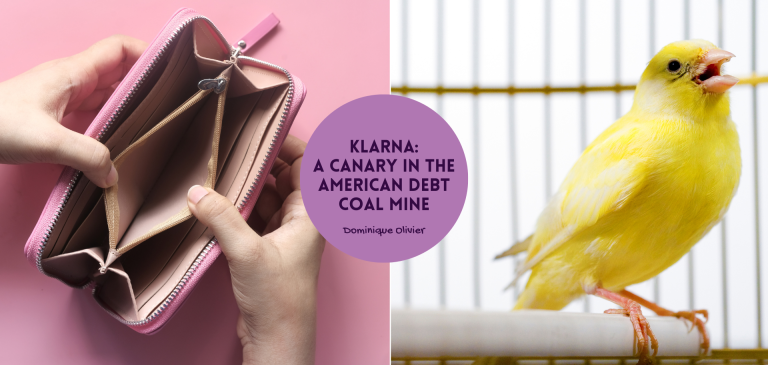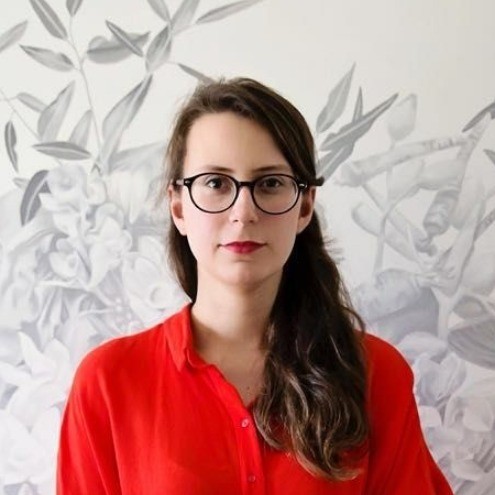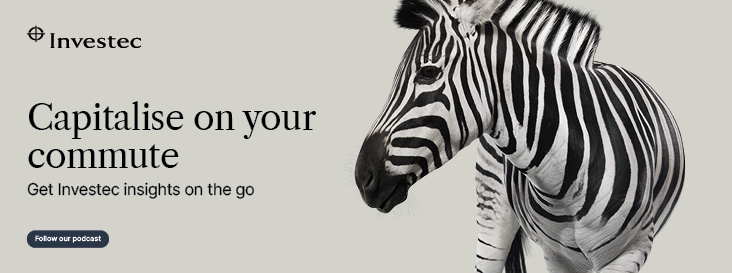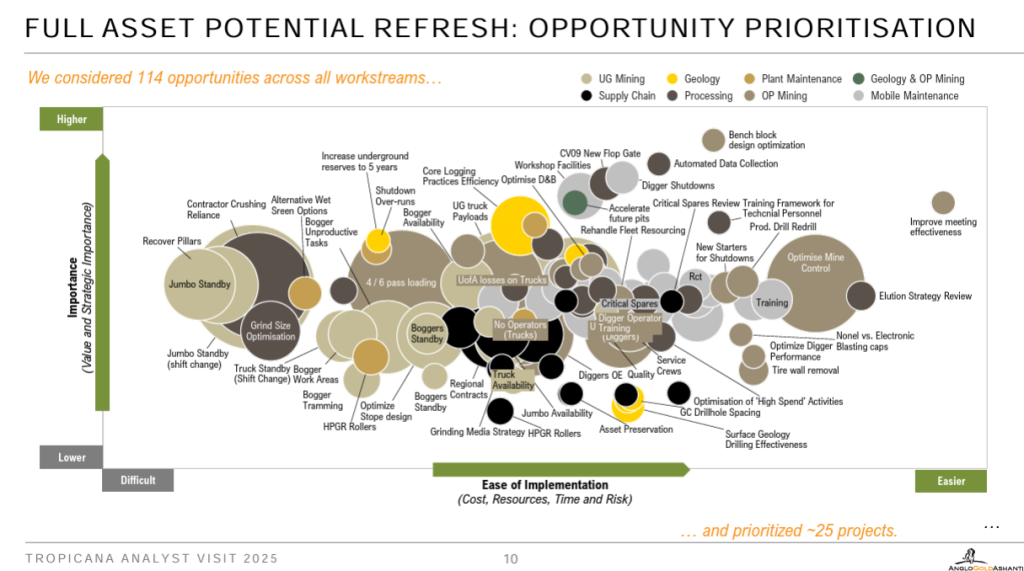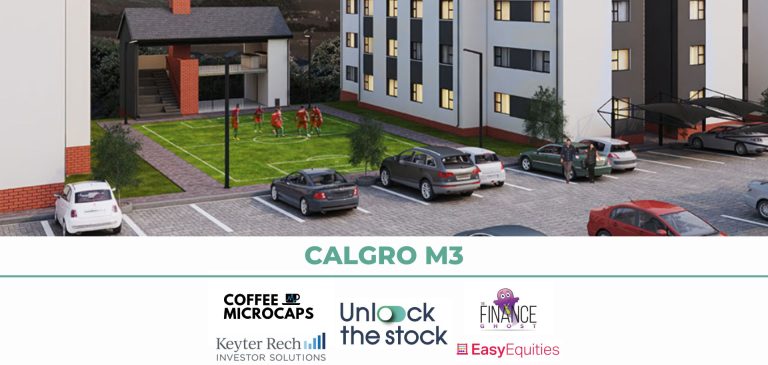Listen to the show using this podcast player:
PSG Financial Services is the proud sponsor of the Think Big South Africa competition, in collaboration with Economic Research Southern Africa (ERSA). PSG wants to encourage South Africans to get involved in their country at the highest level, bringing forward policy ideas and constructive solutions to drive conversations and real change in our country.
The 2025 topic is How Capital Markets Enhance Economic Performance and Facilitate Job Creation. Papers are due for submission by 30 August 2025. In addition to the fantastic opportunity to drive change in our country, there’s an impressive first prize of R500,000 and there are several other cash prizes as well.
To discuss the importance of this competition and why PSG is so proud to be involved, PSG Financial Services CEO Francois Gouws joined me on this podcast.
You can find out more about the competition at this link.
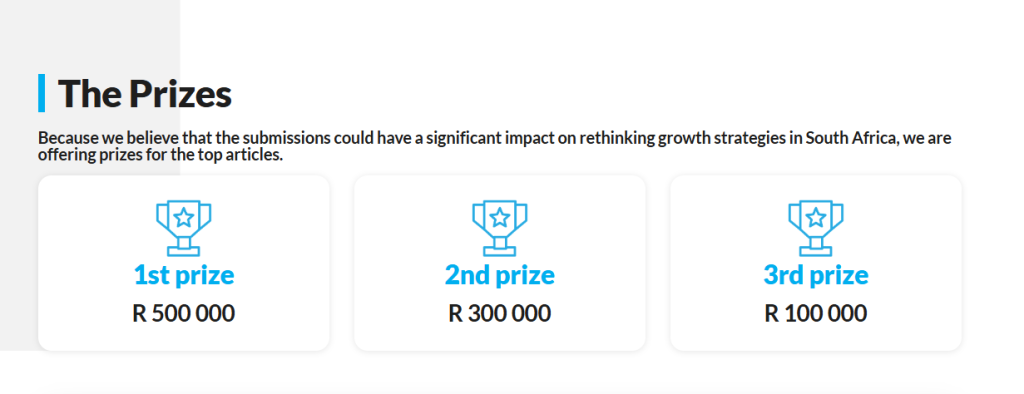
Full transcript:
Intro: This episode of Ghost Stories features Francois Gouws, the CEO of PSG. PSG is the sponsor of the Think Big South Africa competition. This is an opportunity to make your voice heard, drive policy in South Africa, and earn some pretty impressive prize money along the way. The 2025 topic is the role of capital markets in enhancing economic growth and job creation in South Africa, and the first prize for this competition is a significant R500,000. We dig into the backstory of this competition and why PSG is so proud to be involved here.
The Finance Ghost: Welcome to this episode of the Ghost Stories podcast with your host, The Finance Ghost. And I’m particularly excited for this one because we are doing something, I think, very different and very important for this country that we know and love.
My guest on this episode is Francois Gouws. He is the CEO of PSG Financial Services. And although there’s definitely a case to be made for talking about a share price chart that seems to be going to the top right of the page all the time – it really is a great business and I’ve written about it many times – that is actually not what we will be talking about today. Francois has another passion and so does the team at PSG around just driving South Africa forwards and rewarding the thinkers who can bring great ideas.
So, Francois, thank you so much for your time and interest in doing this. I’m really looking forward to this conversation. I think we’re going to learn some interesting stuff.
Francois Gouws: Thank you. Looking forward to it.
The Finance Ghost: So, I think as finance professionals especially, but just South Africans in general, we so often get bombarded with bad news, right? We really do in South Africa. But it does feel like there’s been a lot of good news lately as well, which is pretty exciting. I mean, load shedding is almost completely gone. I think there’s been a lot of realisation that as an emerging market, yes, we have our challenges and sometimes we get dragged through the mud in the international media, but there are a lot of opportunities here for not just investors, but also entrepreneurs. I guess I’m a case in point in some respects, having started this business five years ago. I can’t imagine where else in the world I would want to live but South Africa, I love it here and this is where I want to build things.
You are here in South Africa, so clearly you feel the same. And of course, PSG’s business is in South Africa. That’s really its heart. But still, even with all of that said and the obvious business importance of South Africa, there aren’t a lot of corporates I think that look to play a genuinely active role, like you are doing in our society with your Think Big South Africa competition. And obviously that’s what we’re going to dive into in a lot of detail in this podcast.
But before we get into the real meat of it, could you just give us some background to the Think Big South Africa competition and why you believe so strongly that this thing is important?
Francois Gouws: Thank you. PSG is exclusively a South African company, so all our profits are generated domestically, and that means that you’re dependent on the South African economy. So if, if things go well here, then our business tends to do well and obviously the reverse. As commercial individuals, we always hope for the best, but we plan for the worst. And if there’s areas that we see require attention, we try and participate. And I think there’s been a couple of big topics that people have talked about in South Africa, but I think that last year we said that economic growth is a key driver for fixing inequality and dealing with poverty and dealing with unemployment. We had a lot of interest in that. And I think that debate on economic growth continued into the current year.
And I think this year, being a company that operates in capital markets and sees the need for finance, which is in short supply at the present moment, both locally and internationally, we thought it’d be a good idea to talk about it and specifically what the benefits of the capital markets, particularly as it helps economic performance and ultimately how it creates jobs. So, we’re eagerly awaiting what will come through in terms of the various essays and participants, but we think it’s a big topic, and I think you can’t really engineer economic growth if you can’t raise finance to support it. I think it’s going to be a critical debate, not just this year, but I think it’ll carry on into next year.
The Finance Ghost: Yeah, absolutely. I mean, as someone who’s obviously very passionate about capital markets myself, it is great to see this topic coming through. I’ve got to tell you, I’m pretty tempted to actually enter the competition, having looked at the topic and some of the requirements, it looks pretty interesting. So, we’ll have to see. We’ll have to see how that goes.
But you’re doing this in a partnership, right? This is with Economic Research SA. So how does that partnership actually work? Why did you partner with them? I’m interested in the backstory to this thing, actually.
Francois Gouws: Economic Research Southern Africa is a credible organisation that’s participating in all the key topics. Of course, they’ve got access to all the various universities, they’ve got a wide group of participants that attend their various conferences and so on. I think it adds credibility. It also brings impartiality; it brings objectivity to an important topic. And I think when you’re debating these issues, I think you’re always careful of bias and you want critical analysis. And I think that’s a key contribution which they make.
The Finance Ghost: Bias is a fascinating thing, right? Anyone who has spent any amount of time buying and selling shares will understand bias very well. Or at least should make an attempt to understand bias very well because it’s strongly gets in the way of critical analysis. And South Africa has got lots of different biases, like any country, I suppose, but ours is particularly unique and interesting. I think it’s really good to see just solid constructive debate around these points.
And it’s just so important, right? I mean, we’re in a country with such a high unemployment rate and yet so many great South Africans who are out there building things, and an informal economy that obviously is buzzing along – the unemployment rate really only tells you part of the story of what’s going on in South Africa. There’s so much else that bubbles underneath the surface all the time. And yet it’s not really a high-growth economy or it hasn’t historically been one. We don’t necessarily have as much access to finance as we would like, I think especially for smaller businesses. So, it is this very interesting, nuanced space.
I think resilience is the word that comes to mind for me when I think of South Africans, I just think of how strong they are. I think of how they always figure out a way to actually get through and win. I think we run our country a little bit like we play our rugby, where you really have to just keep grinding away until you get the victory, right? It feels a little bit like that. I mean, your experience running such a large company over the past decade has probably been something similar, I would think, including of course, a pandemic in the middle?
Francois Gouws: You know, what we try and do at PSG is think about things in international terms. I mean, there’s often a lot that you can learn from international markets, in this case international capital markets. So, when you have well developed capital markets, what you tend to see around the world, particularly in the US for example, you see high productivity, you see real wage growth, you see low unemployment, and that’s all because capital is being allocated in an optimal way, it goes to the causes and opportunity sets that justify those capital flows.
I think we in South Africa suffer from a constraint of financing. Given the wastage that’s occurred over the last 10 or so years and the degree to which it’s been funded by government debt, which is now at very, very high levels, approaching 80%, and where the IMF has indicated the numbers could be even higher, that means that finance is a constraint.
If you want to get things going from an economic growth point of view, you’re going to need funding. And that funding won’t just come from domestic institutions, it has to come from international institutions also. So, you need to make sure that you have the right policies, you need to have the right frameworks. But the good thing about South Africa is it’s one of the oldest capital markets in the world. If you go back in time, the Johannesburg Stock Exchange funded the start of the gold mining boom in South Africa. If you look at the state-owned enterprises, many of these enterprises were funded through capital market activities. Electricity, steel, you could just go on and on.
If we can develop the right policies, it’s actually – the benefit of South Africa is that we’ve got this very healthy ecosystem, we’ve got a great central bank with a lot of credibility. Notwithstanding the recent travails that we’ve had with the Treasury and the VAT question, highly credible Treasury. We’ve got a law system that works, we’ve got patent protection, you’ve got all the key ingredients to be able to raise the funds to secure investment. So there’s lots of reasons to be optimistic, but you nevertheless need to execute. And as you, the Ghost and I discussed at the start of the show, I think that’s harder than people think. And that’s why I think this is such an important debate – the practical elements to get things going and from our point of view, the capital markets being efficient and being able to raise the funds required to, to get growth going in South Africa.
The Finance Ghost: Yeah, we had a great little pre-show chat about just how it’s easy to have an idea and it’s much harder to build something…
Francois Gouws: …absolutely.
The Finance Ghost: Obviously with reference to what PSG has built, bluntly, it’s an incredible business with a wide moat. And I think what you referenced there about South Africa is just the guardrails in place that have managed to keep us going. Even though it feels like this bowling ball has been hitting them on both sides for the past decade or so, it somehow still made it, it’s still made it to the end and it’s hit some pins there, in South Africa’s ten pin bowling analogy. And you know, hopefully we can hit a lot more going forward.
A lot of it is going to come down to the policies that we set, which is I guess where this Think Big South Africa competition really plays a role. Because what you’re actually looking for is quite serious ideas from educated and experienced people. I’m going to reference the prize money here because I think it actually gives an idea of the quality of work that you’re expecting here. So in 2024, the first prize was R300,000, which is a pretty serious number. In 2025, it’s now R500,000, which is an even more serious number. And in fact, this year’s second prize is actually equal to last year’s first prize.
I guess not only are you clearly getting the outcomes that you want in terms of the competition, but you know, you’ve made the decision to increase the prize money. You’ve made the decision to say, hey, this is a lucrative use of your time, if you are an experienced and well-educated person who has a view here or just regardless, someone who actually can come in with some big ideas here to drive this conversation. I think it’s an amazing prize.
What was the thinking behind upping it in 2025? Is it just to kind of keep it going and keep attracting great ideas?
Francois Gouws: We’re capitalists, so we believe in efficient markets, sometimes we think our government underestimates confidence and aspirations and also incentives. So, in our own mind we wanted to create an incentive for serious people to tackle this particular problem. And in the context and the scope of the scale of trying to fix South Africa, I think the prize money is minuscule, but hopefully serves as an individual incentive for people to come with good ideas.
Some of these topics are difficult. There’s of course lots of international research about many of these topics – how capital markets help economic performance and deal with jobs and so on. But those aren’t really meaningful in a South African context always. So even if you invoke and use international research, you need to make sure that it applies to the uniquely South African circumstances – our very high employment rate, things like inequality, things like regional differences, a lack of skills and so on.
So there’s a variety of different things that you’re going to have to take into account when you deal with the South African circumstances. And then I think the other idea that we had is if you make these incentives significant, it also allows for groups of people to collaborate.
This doesn’t have to be a prize for an individual. It could be for a group of individuals who participate, let’s say at a university or a think tank or, or even business working with academic institutions or government institutions themselves. I mean, there’s no limitation in this competition on good ideas.
And then I think the last point perhaps as an incentive is our previous winners were masters students, we’ve had a university professor from Stellenbosch win second prize, so it’s not restricted only to academics, but it’s also open to anybody. And of course it’s prestigious, because the judges in the competition are all market professionals and recognised in their own right. I think beyond the financial incentives, I think just the incentive of recognition that you’re going to be competing in a tough competition with some very, very good participants and coming out on top or winning a prize is a tremendous incentive. So, yeah, we very eagerly await participation in this competition.
The Finance Ghost: I know that your background is also in investment banking and this reminds me of – there was just someone I worked for very early in my career and he always had this very tongue in cheek comment where he said: since money was invented, there’s really only one way to say thank you, which obviously is just quite funny in the context of this being a great prize, but as you say, there’s just the opportunity to actually engage with such experienced people. There’s the opportunity to meet other people who might put entries in. There’s the opportunity to take that research forward and actually discuss it in the right places.
It’s this really great combination I think, of there is a genuine financial incentive here and it is a serious one, but on top of that, there’s the ability to actually contribute. And sometimes we’re missing either one of those ingredients, right? It’s great that you recognise the need to say, hey, this is actually real incentivisation because people need to spend time on this to get high quality input into this competition.
I love the thinking behind it. And I also think it’s really interesting that there are a couple of special categories here. There’s one for people below the age of 25, so if you’re a youngster listening to this and you are feeling, you know, wow, this is very daunting, there’s these big shot professors and there’s all these people who’ve got lots of experience entering, get your entry in. Because the point is, there is a special category for people below the age of 25, and that’s obviously because Francois and the team are looking for youngsters to have a voice. This is the future of our country and there’s a good reason for that.
As well as those who are not in formal academic environments, there’s a category for that as well. And I guess, Francois, that’s just the desire of maybe the business voice coming through, the somewhat more “what’s happening in practice” kind of insights. I think that’s also an important one. I think you’ve done a very good job there of just making sure there’s space for everyone and actually allowing this stuff to come through.
Francois Gouws: You know, we. We believe in collaboration, we believe in participation. And I think that’s, as you say, that’s really what we’ve been trying to achieve. There’s lots of talk in South Africa about the “great debate” and sharing of ideas and so on, but often that’s restricted to politics or to macroeconomic issues.
And I think the financial community, the business community, the academic community has also got a large contribution to make in terms of finance. And ultimately, if you can’t fund the noble ideas which you have, then it won’t translate into tangible success.
In our minds, these debates are perhaps even more important than some of the political discussions that’s going on, because it makes those great ideas, it translates them into tangible things that you need to do to achieve success and certainly to fix some of the big problems that you have in South Africa.
The Finance Ghost: Yeah, I would agree with that. And I think that had we focused only on politics for the past 10 or 20 years and not actually had these guardrails in place from a policy perspective and the financial infrastructure that you mentioned, where would we be today?
So this stuff has got to carry on. It’s got to carry on in the background. It should be coming to the foreground. We should be talking less about politics and more about how this stuff is really filtering down. But we are somewhat in a clickbaity world and people do love reading about politics.
It’s great to see focus on this kind of stuff.
I also couldn’t help but notice that another change to last year is not just the higher prize money, but also that you will be a judge on the panel this year. You weren’t one last year. Was it just too much fun and you felt like you missed out last year and you wanted to get involved or what was the reason for coming onto the panel?
Francois Gouws: I think it’s pretty exciting. If you’re a market professional, as I’ve been for 40-odd years, you want to participate, you want to give some stuff back and you also want to learn. I mean, things are – you live in a dynamic world and finances are ever-developing concepts, so on a personal level, I’m delighted to be involved.
I also want to support the idea that you have fact based, impartial research. And sometimes I think when you read government legislation or policy, a lot of it is ideological. There isn’t enough by way of socioeconomic impact studies and asking some hard questions about why certain policies are followed and having the appropriate debates backed up by solid research. So this is an attempt to also not just have the debate, but also to encourage rigour in – and analytical – thinking to deal with real problems. And I think that’s important. It’s vital because otherwise how do you decide on one course of action as opposed to another?
But I think the panel extends well beyond me. I mean, it also has Chris Loewald, who’s the chief economist at the central bank and MPC member. Fatima runs 27four as a chief executive, Malu, who runs Mazi, and then Leila, who’s the chief executive at the JSE. So there are highly experienced professionals, market practitioners from varied backgrounds that show an interest and a willingness to actually help.

It goes well beyond our own organisation. It shows that there’s interest in a variety of individuals with financial expertise to participate in the judging panel. And I think that elevates the importance of this work and it increases the prestige for all the various winners that eventually gets judged at the end of this competition in August.
The Finance Ghost: Yeah, totally agree. So, what have been some standouts for you from previous competitions in terms of stuff you’ve learned or papers that you thought were really just super interesting, ideas that came from, not necessarily from left field, but just what were some of your learnings from previous examples of this competition that has really made this so rewarding for you?
Francois Gouws: Well, if you go back two years, maybe two, three years, the narrative in South Africa hadn’t yet focused on economic growth and the fact that you need economic growth to deal with inequality, poverty and unemployment. It was only about two years ago that the president in his own speech acknowledged the importance of economic growth and as a driver to fix some of the most pressing issues that you have, so the fact that we ran the competition at the time, I mean it’s not just PSG, but I think there’s awareness amongst financial services and business executives that economic growth was vital. And I think that competition helped to elevate that debate.
And now, two years later, it’s pretty much conventional wisdom. Everybody now, if you talk to them, would say, yes, of course, economic growth is what you require to deal with these things. But that wasn’t the thinking at the time. You can perhaps ask why that wasn’t the thinking at the time, but it just wasn’t. So I think the mere fact that we, and many others by the way, helped to change the thinking and to start focusing on economic growth was a very important issue.
I think the other thing that came out of the research was you don’t just engineer economic growth through happenstance. It’s a highly technical area with lots of varied input. And you can’t just look at one variable, you need to look at multiple variables and you have to get them all in sync.
I think the research that came out of the last competition made that very, very clear. And I think where we are today is we perhaps realise that Operation Vulindlela, which had three elements of energy and logistics and crime, has to be extended beyond those three points if you really want to get economic growth going. Economic growth is a complicated subject. You have to deal with water, you have to deal with a variety of other topics and all of those things have to work in unison to actually engineer the economic growth.
And then some other highlights were it doesn’t all have to be at the macro level. It could also be at the micro level. It can be at the regional or sub-regional level in terms of microfinance, township economies, how they work, how they’re funded, why that helps the informal economy and perhaps creates employment which isn’t generally tracked. The fact that that’s an important area to look at I think came out of the research very, very clearly and perhaps was underestimated.
I think all these topics raise awareness that economics is a complicated and technical area and yet quite fact-based and informs, ultimately informs good decision making, which is really what we want to see is good decisions. And good decisions will kickstart economic growth and help South Africa to achieve its full potential.
The Finance Ghost: Yeah, the kasi economy as it’s called is a fascinating thing. I do have a great interest in that informal sector actually, and how much of it then comes into formal over time. It really is interesting. I think, some of those previous years’ topics, the concepts of, as you say, something like economic growth is actually very technical and it’s kind of that playground for economists and those who really understand those more macroeconomic and as you say, microeconomic points. I think what really piqued my interest this year is when I saw reference to capital markets, which of course is an area that I feel like I do understand as opposed to something like economic growth, where I have an appreciation for it, but I definitely don’t profess to be anything close to an expert in that space.
The capital markets are super interesting because that is basically connecting capital to opportunities. That’s what a capital market does at its core. And the South African capital market is world-class, literally. I wish it had more ability for people to raise money and more liquidity and we all wish those things. But the infrastructure is literally world-class. And so I think that is just a fascinating topic for it this year. It’s certainly, as I say, what grabbed my attention.
I think maybe we should talk a little bit about what the submission actually looks like because I’m sure by now those listening are, well, if they haven’t already googled while listening, they must be frothing to find out how it actually works. Let’s talk a bit about the submission itself.
It’s due by the 30th of August, so there’s still quite a bit of time. Document needs to be between 2,000 and 3,000 words in length. The topic is how capital markets enhance economic performance and facilitate job creation. So, super interesting. From what I’ve seen online, you’re looking for a narrative-driven analysis based on existing data, although original analysis is also welcome. And you’re looking for a paper that deals with things like the overall environment and what that needs to be for a capital market to thrive, but also just how capital markets can participate here.
It’s just a really interesting topic and what’s also very helpful I think is that on the website there is a good example of a submission. I’ll include a link to that in the show notes. And so I would encourage, obviously those listening to this podcast to give some proper thought to how you would want to actually make your voice heard because capital markets are fascinating. They are very interesting.
And Francois, as you said, these papers, yeah, prize money is great, but it’s actually way more interesting than that because these papers actually go somewhere. They drive thinking. And as you made the point, what is conventional wisdom today was not conventional wisdom a couple of years ago necessarily because policy changes over time and it changes in response to the feedback given by not just academics, but also business and on the ground and what’s really happening and the international investor community and what they’re looking for and how we participate in a global economy.
It is just a really great topic and I would certainly encourage people to give it a bash. Get your submissions in.
I think to bring this to a close – Francois, just any closing thoughts from your side in terms of this year’s topic? Maybe some of the stuff that you think is interesting or might be looking out for and just to encourage people to actually get that submission in?
Francois Gouws: There are so many different ways in which you can cover this topic. But in its simplest way, capital markets connect people who save and that could be directly or indirectly through you as an individual, as a pension fund participant, with the users of those funds. There’s a lot to talk about right there. And then of course, I think the key question in South Africa is because of the levels of debt, in order to fund growth, we can’t simply rely on domestic funding. We have to get international investors interested in South Africa. And sometimes I think the danger when people debate South Africa, they debate it in the context of a bubble, and yet we operate in a global marketplace where funds can go anywhere.
So I think – and we’ve had many questions on this – I think a key area will be particularly after our president when went to the US, a key question is really how do we get international funders interested in South Africa? What kind of conditions do we need to create and what will crowd them into South African investments, which is solely needed if we want to kick start economic growth and ultimately create employment?
I would just encourage people when they think about these topics, you can tackle it in so many different ways. I think some of the ideas I gave now will give you some direction, but honestly, we welcome any new ideas, any fresh ideas that haven’t been aired, so we’re very much looking forward to going through all the various submissions. But thank you very much for having me on your show.
The Finance Ghost: Yeah, it’s been a pleasure, Francois, thank you. And in my closing comments, I had a look at the weightings of how you will assess these papers. Originality and creativity gets a 30% weighting, so to those listening to this, you may not have written an academic paper in a while, you may be feeling like this sounds too much like a little masters – go and have a look at the example on the site. I really would encourage you to do that. Just Google PSG Think Big South Africa, you’ll find a landing page on the PSG website with lots of information. And then on Economic Research Southern Africa, that’s where you’ll actually find the submission form and just the final details you need on this. So just Google it. You will find it. That’s Think Big South Africa.
And get those ideas in, because I can see what’s being rewarded here is original, creative ideas with practical implementation. I think that the panel reflects the need for this to be practical. You do, at the end of the day, have the CEO of the JSE on this panel, among other leaders in this space.
So, super interesting Francois, I love what you’re doing for this country that we both love so much. Thank you. Thank you for your support of the Ghost Mail platform as well, and for believing in the audience sitting behind this. And to the audience, go and get those papers done. Francois, thank you so much and good luck with the judging process.
Francois Gouws: Thank you very much. Appreciate it, Ghost.


